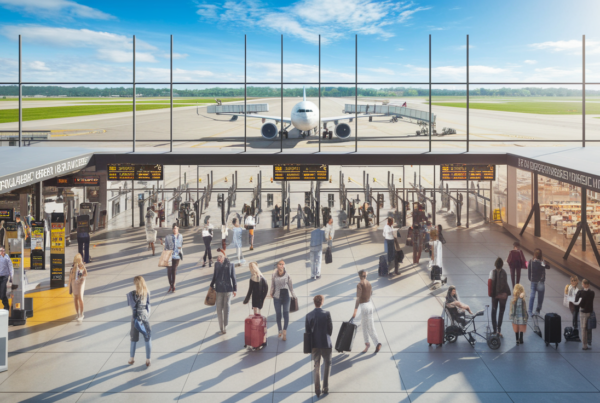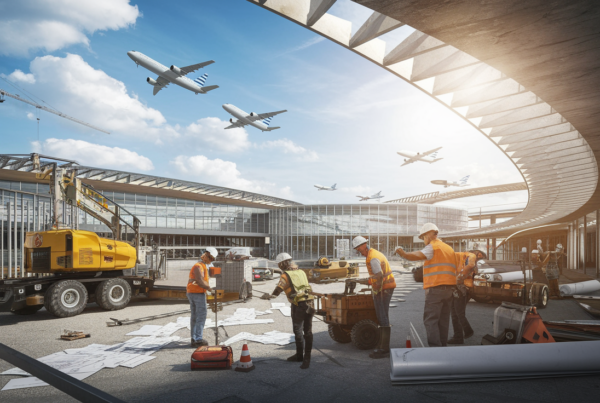The city of Frankfurt is currently experiencing a stagnation traffic due to a number of regulatory costs exorbitant. The administrative requirements imposed on airlines considerably slow down flight activity. This has led to a significant drop in passenger numbers and a reduction in international connections. Efforts to regulate airspace are coming up against budgetary constraints, altering operators' strategies. As a result, the economic dynamism linked to the aeronautical sector is affected, disrupting the efficiency of connections and Frankfurt's competitiveness on the world stage. The authorities are looking for innovative solutions to revitalize the aviation business in a hurry.
The air hub of Frankfurt is currently facing a major challenge: the stagnation of its traffic. This phenomenon is largely attributable to a number of exorbitant regulatory costs on all players in the sector. In a context of heightened international competition, these additional costs have a significant impact on the competitiveness of the airport and, by extension, the region.
Impact of regulations on aviation activity
The requirements imposed by the regulatory authorities, although driven by a desire to protect the environment and ensure its safety, are resulting in a significant rise in costs for airlines. They have to absorb additional costs that limit their ability to invest in innovative technologies or adapt their fleets. What's more, some international operators are choosing to move to other hubs less constrained by these standards. In the competitive world of aviation, for example, we can see how companies featured in articles such as the three sisters of the gulf are redeploying their strategies to optimize operating costs.
Economic consequences for the region
The impact of this situation is not limited to airlines alone. The stagnation of airport traffic is also holding back the development of an entire local economic chain. Sectors such as logistics, trade and tourism are feeling the repercussions of these financial constraints. Against this backdrop, the Frankfurt region is facing structural challenges, which highlight the urgent need to review pricing policies to maintain the attractiveness of the air infrastructure.
Comparison with other European hubs
In Europe, competition between airports is increasingly fierce, and some hubs are managing to circumvent high-cost systems through strategic partnerships or by adopting flexibility measures. Relevant examples include cases such as Paris airports, where passenger traffic is constant despite market challenges, as indicated by reports of traffic below pre-pandemic levels (constant passenger traffic). In addition, some destinations such as Sweden are seeing their international traffic grow, highlighting the challenge of remaining competitive in a globalized market (international traffic on the rise).
Initiatives and areas for improvement
Faced with this situation, a number of initiatives are being considered to lighten the regulatory burden. Some proposals aim to review taxation mechanisms and introduce incentives to boost the sector. Current discussions even include comparisons with international models, notably in the aeronautics sector, where major manufacturers like Boeing sometimes find themselves at the heart of complex negotiations on wages and working conditions (conflict at Boeing). These exchanges illustrate the urgent need for a regulatory overhaul aimed at balancing safety requirements, environmental protection and economic competitiveness.
The situation in Frankfurt is symptomatic of a wider debate running through the entire European airline industry. While some regions are managing to find effective solutions to mitigate the financial impact of regulations, others, such as Frankfurt, are struggling to redress the balance of the industry. traffic because of the administrative burden and associated costs.
Comparative analysis of the Frankfurt Challenge
| Axis | Observation |
|---|---|
| Regulatory costs | Significant increase in expenditure, slowing down activity. |
| Stagnating traffic | Passenger numbers remain stable and low. |
| Economic pressure | Investment is limited by high costs. |
| Rigid pricing | Rates are not adjusted to market requirements. |
| Regional competition | Other European hubs are capturing more traffic. |
| Infrastructure | Limited modernization to meet growing needs. |
| Strict standards | Requires substantial investment to comply. |
| Operational flexibility | Difficulty in adapting supply to fluctuations. |
| Avenir | Strategic reforms are essential to stimulate growth. |
On the same theme
In Sweden, international traffic booms while domestic market stagnates
In Sweden, the international air transport sector is growing by leaps and bounds, contrasting with the situation in the domestic market, which is struggling to make headway. This trend reveals the challenges and opportunities facing Swedish airlines, in a context of growing international competition and...





